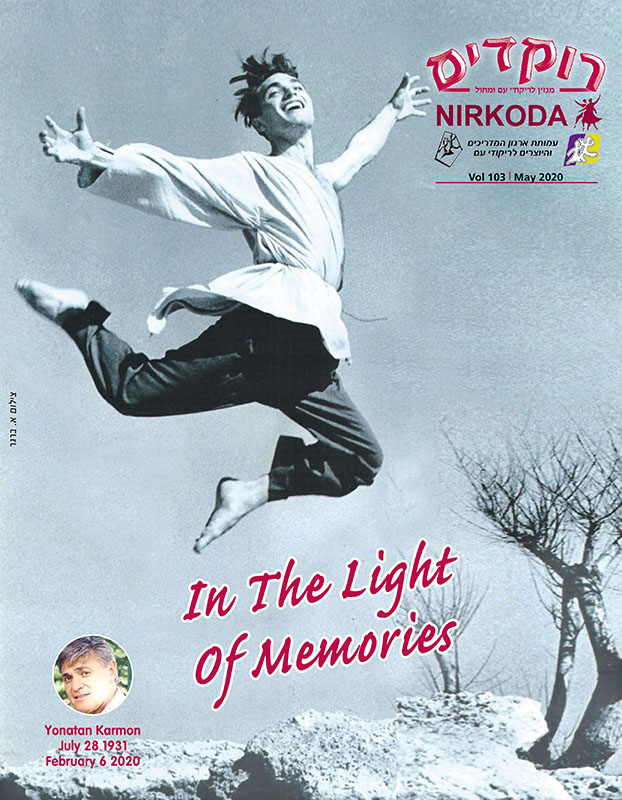- Home
- Rokdim Nirkoda 103
- Why I Love The Man And His Legacy
Why I Love The Man And His Legacy
Yigal researches and documents Karmon's dances
- Translation: Alex Huber
I didn’t dance in Lehakat Karmon, but… my connection with Yonatan Karmon is that of affection. For five years now, I have been immersed with pleasure in the research and documentation of – “The heritage of folk dance and dance for the stage in Israel”.
Much has been written about Yonatan, mainly in research and books by “eye witnesses”. Almost everyone points to Yonatan as the supreme dancer, choreographer and director. Pictures and films exist, quite abundantly, that document him and his past dance troupes as well as outstanding Israeli dance troupes performing his legendary dance choreographies.
I feel a personal-dance-cultural deprivation with regard to Karmon, which I endeavor to fill by documenting conversations with his students, his followers and others who were in his social circle. I slowly acquire pieces of the puzzle that make up the overall picture of Yonatan and his contribution to the dance culture in Israel.
Young Yonatan is documented in many videos, in black and white. He dances on stage, like a frenzied boy, restless, while inspiring his dancers to do the same. I, a simple man, without a degree in theater, can understand and enjoy the performances of Lehakat Karmon because they are high-quality dance theater performances.
Many years ago, when I was younger, I belonged to a “Gar’in Nahal,” as an accordionist among other things. I amassed many hours of playing and specifically playing timeless dance music, such as “Haroa Haktana”, “Al Tira”, “Shibolet Basadeh”, and more …
As an advocate for the language of art and dance, I repeatedly watch the wonderous “Karmonic” creations and every time I am fascinated by new details in the plot, which I had not noticed in the previous viewing which is not due to…problems with my memory.
Focusing on still images from Karmon dance videos allows me to recognize the body language of the dancers and especially Yonatan and his magical mimicking, which together form a dramatic story line.
In the dances that Yonatan created, I notice a constant pattern of “beginning, middle and end” with a beginning of about four to seven minutes, followed by a dramatic story which reaches its conclusion with a dramatic “closing of the plot”.
Karmon’s stories, in the language of dance, describe with great charm his love for the Israeli world of nature and brings to life the landscapes of the country and its people.
Finished, but not completed, Yonatan Karmon, may he rest in peace, is still in our lives. It is appropriate that we spread and integrate into the public, in all its diversity and age groups, the “Karmonic dance language” and think of it as “classical dance”.
For me, Yonatan is still here, he’s not leaving us. His magical works – “Rhapsody”, “The Four Seasons”, “Rehavia”, “Haroa Haktana”, “Al Tira,” and many others, will become the language of the public at large.









Comments
התראות